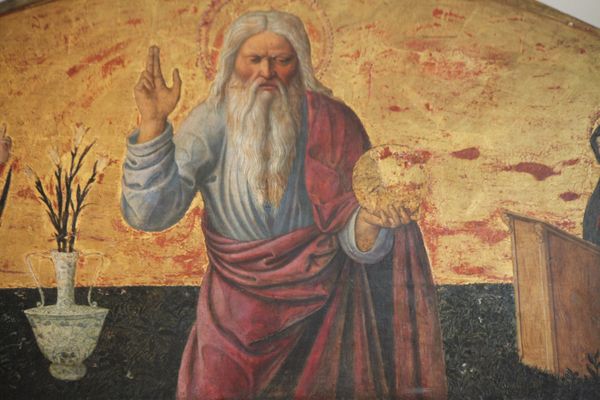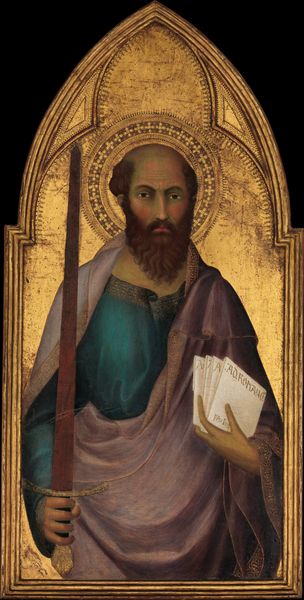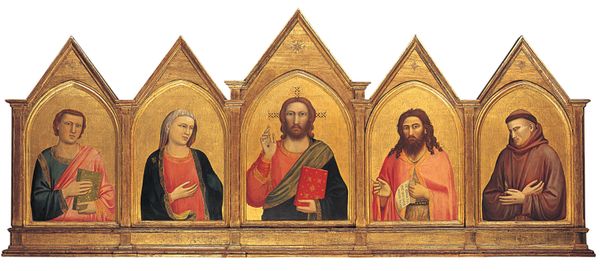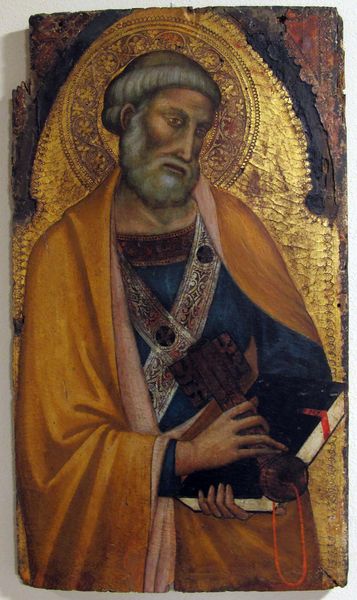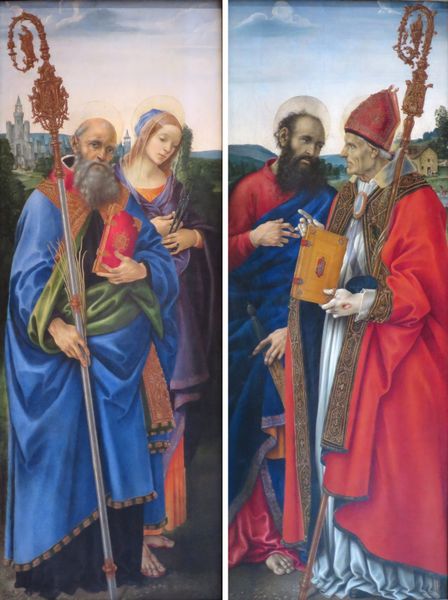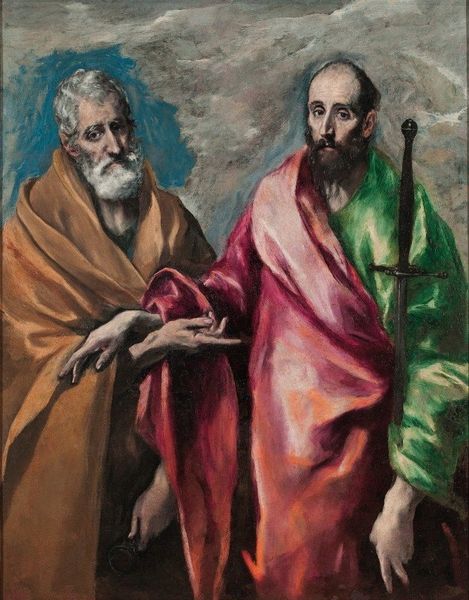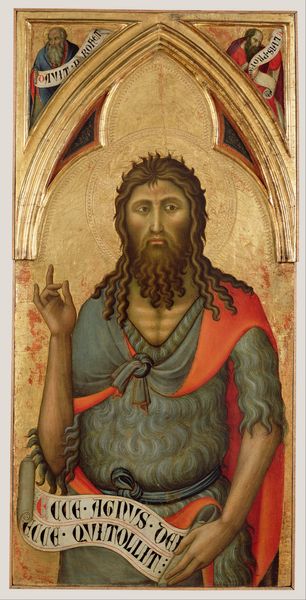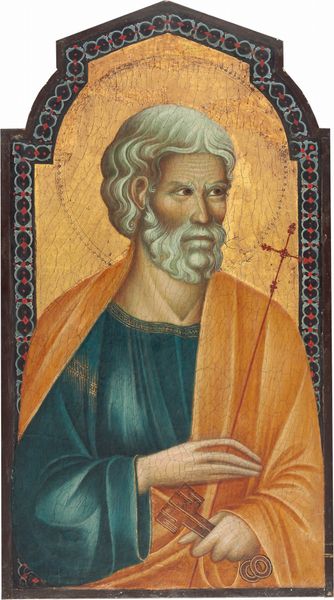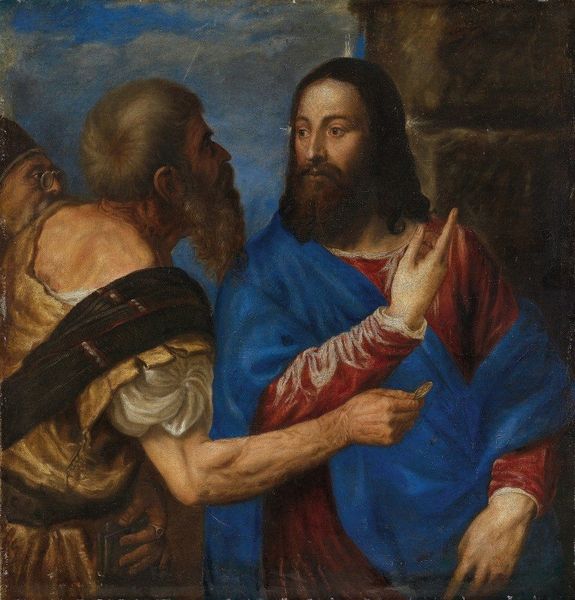
oil-paint
#
portrait
#
oil-paint
#
oil painting
#
history-painting
#
italian-renaissance
Copyright: Public domain
Curator: Let's explore Carlo Crivelli’s "Two Apostles," an oil-on-panel work from around 1475, created during the Italian Renaissance. Editor: My initial reaction is one of stark solemnity. The two figures seem lost in contemplative silence against that brilliant gold backdrop, almost heavy with a sense of duty. Curator: Yes, Crivelli’s composition uses stark contrasts. The asymmetrically placed figures, defined by their almost severe facial lines and detailed drapery, create a structured viewing experience. Note the texture rendered meticulously using oil paint. Editor: The figures are archetypes of the Apostle – look at their attributes. The figure on the left holds a cross, obviously alluding to suffering and sacrifice. The book held by the second man would signify knowledge, tradition and scriptural interpretation. Curator: Precisely. Crivelli's use of colour reinforces this. The sombre earth-toned robe against the luminosity of the golden background creates a visual hierarchy that accentuates their solemnity, drawing focus to the iconographic narrative being delivered here. Editor: That striking gold, a classic Byzantine element, immediately signals a connection to the divine, elevating them from mere mortals. In Renaissance culture these symbols create continuity with earlier visual traditions. Curator: Note, though, how Crivelli subtly diverges from traditional representations. While he employs conventions, the almost brutal realism in the men's faces injects a very tangible, almost human element. This realism contrasts heavily with the rigid structural symmetry inherent in Renaissance artwork. Editor: A clever juxtaposition. He's grounded the sacred. By making the Apostles resemble relatable, almost weather-beaten men, Crivelli makes the viewer engage on a deeply emotional and personal level, almost making faith an organic thing. Curator: I appreciate your emphasis on their grounding. When you step back and see how the details relate—drapery fold echoing the facial lines—it enhances how their solemn narrative gains impact in context. Editor: This viewing has shown that images not only reflect the past but shape our emotional and intellectual present. Curator: Exactly; examining art this closely reinforces not just Crivelli’s genius but the viewer’s unique perception.
Comments
No comments
Be the first to comment and join the conversation on the ultimate creative platform.
